Latest News
Each month a letter from the College Chair will be published here to regularly communicate their work to the Order and Movement, as well as a link to the latest College Newsletter and the blog page on The Buddhist Centre Online.
Ordinations within the Triratna Order take place throughout the year and world: the UK, Spain, India, Australia, New Zealand and the US, all have ordinations taking place regularly. This section also lists who’s been ordained recently, where they’ve been ordained, and what their new name means.
The College consists of 44 members, with retirements and new appointments on an annual basis. When a new member joins the College, we’ll introduce them here.
Lastly, there is a section for remembrance of College members who have passed away.
LETTER FROM THE CHAIR – FEBRUARY 2023
These letters are published here each month, as well as on The Buddhist Centre Online, and in Shabda, the Order newsletter, as a means to communicate the ongoing work of the College Chair and updates on current discussions and decisions. Responses are welcomed. Click to follow the Preceptors’ College on The Buddhist Centre online.
Dear friends
Maitreyabandhu kindly agreed to write this month’s update from the College. I asked him if he would, as I knew he’d recently been part of the College team for a recent men preceptors’ retreat at Adhisthana (I’m on the women’s one at the moment) and I thought it would be good to hear a different voice for a change. He’s very good at including different voices, and has been the driving force behind the popular evenings during College meetings, when we share our stories and inspiration more personally.
Ratnadharini
++++
Maitreyabandhu lives in a men’s community, Samaggavasa, above the London Buddhist Centre. He was ordained in 1990 by Suvajra, and has lived and worked in the LBC for over 30 years. He is a Public Preceptor within the Padma Kula of the College, primarily responsible for men’s ordinations in the UK and Europe. He also studied at Goldsmiths College of Fine Art (London), and has three poetry collections published with Bloodaxe. One of these, After Cézanne, (reviewed here last year by Vishvapani) is especially relevant to what he writes below…
+++
Dear fellow Order Members and friends,
I’ve just come back from the Tate. Maitreyi had asked if I’d take some of the women in her community to look at the Cézannes. We stood in front of The Basket of Apples. The last time Maitreyi and I went a gallery together was the last Tate Cézanne show in 1995, five years after we were ordained. We’d been friends since the mid 1980s. I remembered taking Jnanavaca to that show not long after he’d moved into the community Paramabandhu and I formed above what was then The Wild Cherry. We’d been ecstatic in front of the Large Bather. I’ve lived with Jnanavaca for over 27 years now. We’re currently writing a book about the Four Myths. Maitreyi had to get back to a Zoom call with a women’s GFR group in Newcastle. She left the rest of us with Cézanne’s astonishing apples.
I’d not long got back from the men’s private preceptors retreat at Adhisthana. It was led by the Padmaloka Kula of the College. Surata was there. He led my first retreat back in 1986. Satyaraja has been a close friend since he invited me to be on the team for the four-month Guhyaloka retreat in 2011. Yashodeva has supported most of the LBC’s Winter Retreats, fixing the dishwasher, leading a mantra, making a fire for New Year’s Eve. I’d been on the Guhyaloka team with Vajrashura in 2019. Paramabandhu and I have been living together since 1986. Paramabandhu is now president of five centres, so with one thing and another, we don’t see that much of each other. He bought me the usual cake and coffee at the Bicester Garden Centre on the way up, and we shared a room as always.
One of the highlights of the retreat was the Zoom celebration, hosted by Vajrashura from beside Bhante’s chair. We’ve been running this event for a few years now. We gathered in the shrine room, all of us in robes (well, not quite all of us), to watch, in this case, over 120 men who have asked for ordination Zooming in from all over the world.
We started by introducing some of the private preceptors: Aryabandhu from Berlin, who’ll be ordaining Rainer Pretz from Essen. Arthamitra who’ll be ordaining Morries Leerat from Arnhem, in the Netherlands. Santaka from Warsaw and Krakow. Manjusiha, who’ll be ordaining Warren Davis. It’ll be the first time a black man has ordained another black man within our movement. Manjusiha and Warren are of dual heritage (African/Caribbean and white European).
Before he was ordained, Manjusiha moved into my room in the community above The Wild Cherry. I was away on a sabbatical. He wanted to stay, so we ended up sharing the room, sleeping in our homemade bunkbed and even for a while sharing a computer. It was such a small room, it was difficult for us both to stand up at the same time.
19 out of the 20 men going to Guhyaloka introduced themselves. Jan Strocki, who’d been invited the previous year until the war in Ukraine prevented him going, spoke. Jan’s father is a doctor in Zhytomyr in the north of Ukraine, not far from the Belarusian border. His parents had been living in the corridor of their flat away from the windows in case of bombing. Jan is a good friend of Brad Schwagler from San Francisco. They plan to share a room at Guhyaloka. Patrick who managed the Zoom call along with Max, will also joining us at Guhyaloka.
I’ll be co-leading the Course with Vidyadaka. I first got to know him as a young designer at MTV attending the Wednesday Class at the LBC. I was to become his private preceptor, as I was to Manjusiha. Vidyadaka will be privately ordaining Michael Curtis and Claudio Gigi. Michael’s mother was raised in a forester’s farmhouse in the Czech countryside. Claudio’s parents were born in Aveiro, the ‘Venice of Portugal’. There is something deeply moving about seeing men you’ve ordained go on to ordain other men.
Before the retreat, I’d been having a WhatsApp conversation with Subhadramati about a fundraiser I’d agreed to lead for Tiratanaloka, a fundraiser that would conclude our Zoom celebration. Subhadramati and I became friends in the 1980s. We were on the team for the Wednesday Class and were often to be seen ‘on the door’ together, holding the dana bowl. We’ve led retreats together, sat in LBC Council Meetings, had countless coffees, and read each other our poetry. She is a true dharma-sister. We are both about to go and lead ordination retreats.
I’d been thinking of Freya and Patrick. They supported the LBC Winter Retreat in 2021. They were wonderful team members, inspired and hard-working despite being thrown in at the deep end. And they were both nineteen! Freya is a medical student, Patrick was at law school before coming to work at the LBC. Now they have both asked for ordination. ‘Wouldn’t it be wrong, unfair, unjust’, I said in my fundraiser, ‘if Freya took longer to get ordained simply because she couldn’t get on retreat at Tiratanaloka?’ ‘I’ve been going to Padmaloka’, I said, ‘for 35 years. Just think what it would have meant if Padmaloka had only been big enough to accommodate 25 people?’
We raised over £12,500. I asked the men on zoom to write how much they were donating in the chat. It was a real treat seeing the sums of money whizzing by. Meanwhile the private preceptors made pledges.
But the journey to Adhisthana was painful. Until now, I’d make sure to see my mother when I went to Adhisthana (we drove past the turning for my home town, Henley-in-Arden). My sister would bring her or I’d go and see her afterwards. At the last College Meeting I took two days off to stay with her. I wish I’d taken longer. She died at 6.55pm on 17th December: the 27th anniversary of my father’s death.
When I got back from Adhisthana, Dharmavartin invited me for a meal at his home in Romford. I’d ordained him the previous autumn. Dharmavartin is a retired fire-fighter. His wife, Pippa is a surgical assistant. Two of their three sons joined us for supper. Matthew has a four-year old daughter and works as a petrol tanker driver (he was due to start work at 4am the next day). Robert is a scaffolder and starts work at 6.30am. There was something, I don’t know, magical about the evening. Dharmavartin and I dedicated his shed in the garden to Milarepa. But what moved me most was the gift Pippa gave me before I left. She’d made me a picture of butterflies in coloured felt and written a card thanking me for support. Dharmavartin gave me a lift back to Romford to catch my train home.
I suppose why I’m saying all this, reiterating all these names and all these places, is just to affirm, in my own small way, the web of friendships that is the life of our order and movement. Subhadramati and Freya, Jan and Brad, Maitreyi and I. The list could go on and on, reaching out across time, across the world, connecting us all.
As, one by one, we make our own commitment,
An ever-widening circle, the Sangha grows.
With love,
Maitreyabandhu
RECENT ORDINATIONS
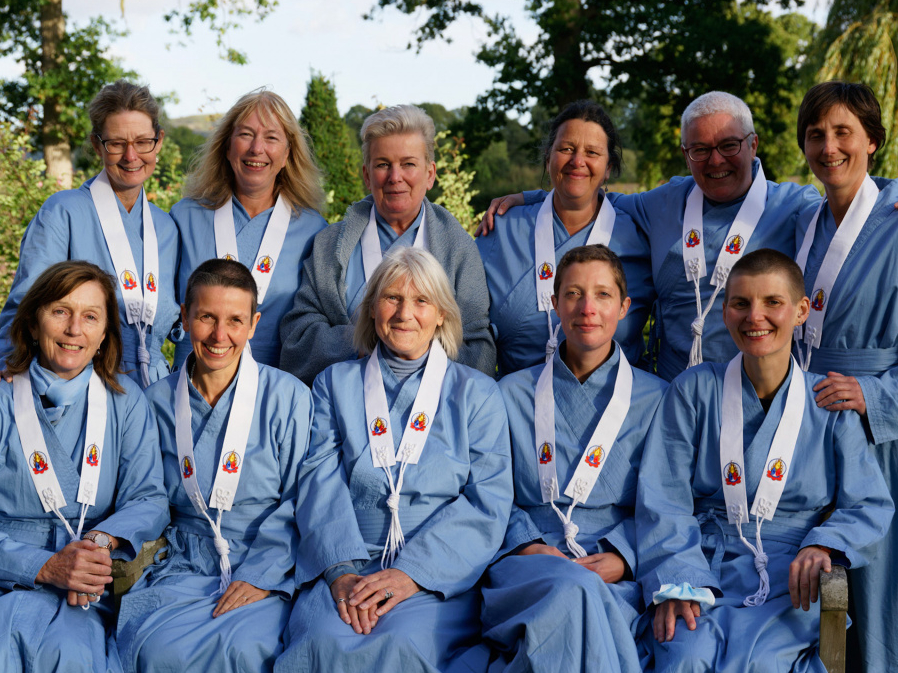
Read More
Virginie Van Mol becomes Lokesvari (accent on the ’s’, long ‘i’) a Sanskrit name meaning Noble Queen of the World.
Registered spelling Lokeshvari. Private preceptor Akasasuri.
Kate Grant becomes Kavaradhi (long second ‘a’. long ‘i’), a Sanskrit name meaning She who has Lotus-like Wisdom.
Registered spelling Kavaradhi. Private preceptor Amritamati.
Steph Delaney becomes Kavyamani (long first ‘a’, dot under the ’n’, long ‘i’), a Sanskrit name meaning Jewel of Inspiration.
Registered spelling Kavyamani. Private preceptor Parami
Linda Diver becomes Tejodhi (long ‘i’), a Sanskrit name meaning She who has Energy and Wisdom.
Registered spelling Tejodhi. Private preceptor Sunetri.
Linda Oliver becomes Jayamoksini (dot under the ’s’, long ‘i’), a Sanskrit name meaning She who is liberated through Victory.
Registered spelling Jayamokshini. Private preceptor Sunetri.
Public Preceptor Parami
Sally Watson becomes Karunajaya (dot under the ’n’, long second and fourth ‘a’), a Sanskrit name meaning She whose Victory is through Compassion.
Registered spelling Karunajaya. Private preceptor Tarasiddhi
Kathy Jarvis becomes Akasadaya (long first, second and fifth ‘a’, accent on the ’s’), a Sanskrit name meaning She whose Kindness comes from the Quality of Space.
Registered spelling Akashadaya. Private preceptor Karunagita.
Anne Fairlie becomes Karunaradha (dot under the ’n’, long second, third and fourth ‘a’), a Sanskrit name meaning Servant of Compassion.
Registered spelling Karunaradha. Private preceptor Dassini.
Ellen Visser becomes Nirmanavati (long first ‘a’, dot under second ’n’, long second ‘i’), a Sanskrit name meaning One who is full of Transformation.
Registered spelling Nirmanavati. Private preceptor Gunabhadri.
Lisa Lens becomes Kusalajoti, a Pali name meaning She who is a Light of the Wholesome.
Registered spelling Kusalajoti. Private preceptor Dharmavasini.
Abi Luthmann becomes Subhanaya (accent on the ’s’, long final ‘a’), a Sanskrit name meaning She whose Leading is Beautiful.
Registered spelling Shubhanaya. Private preceptor Candrika.
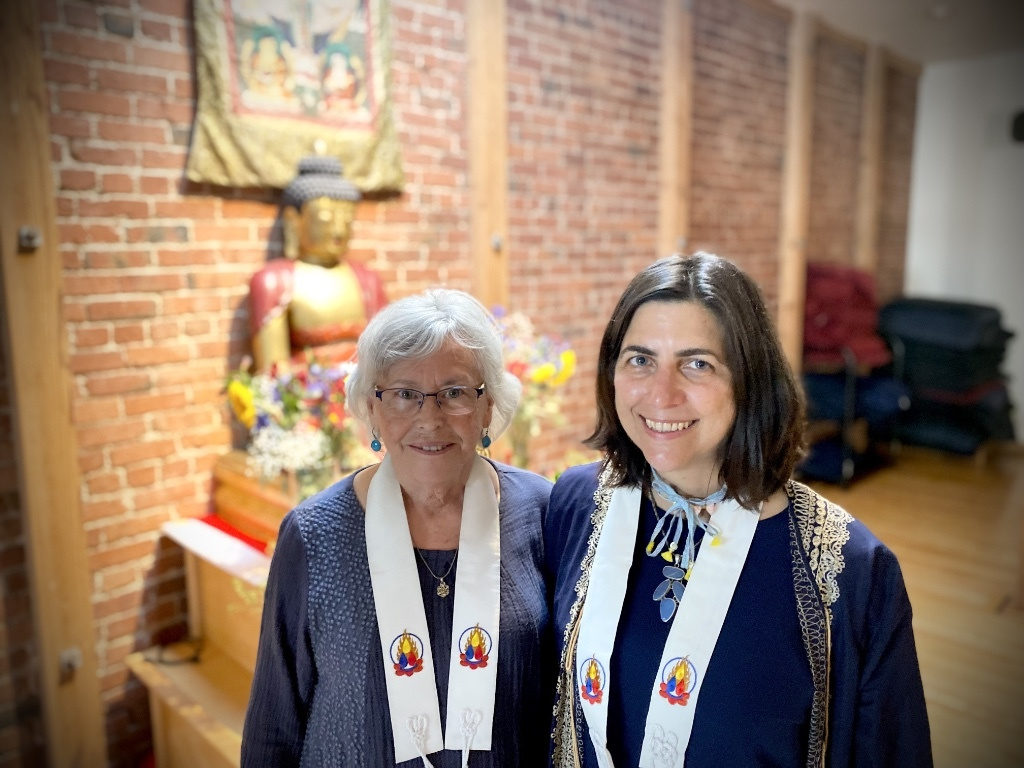
Read More
a Sanskrit name meaning “She who listens to the cries of the world.”
Private preceptor Vimalasara
Public preceptor Karunadevi
SADHU SADHU SADHU!
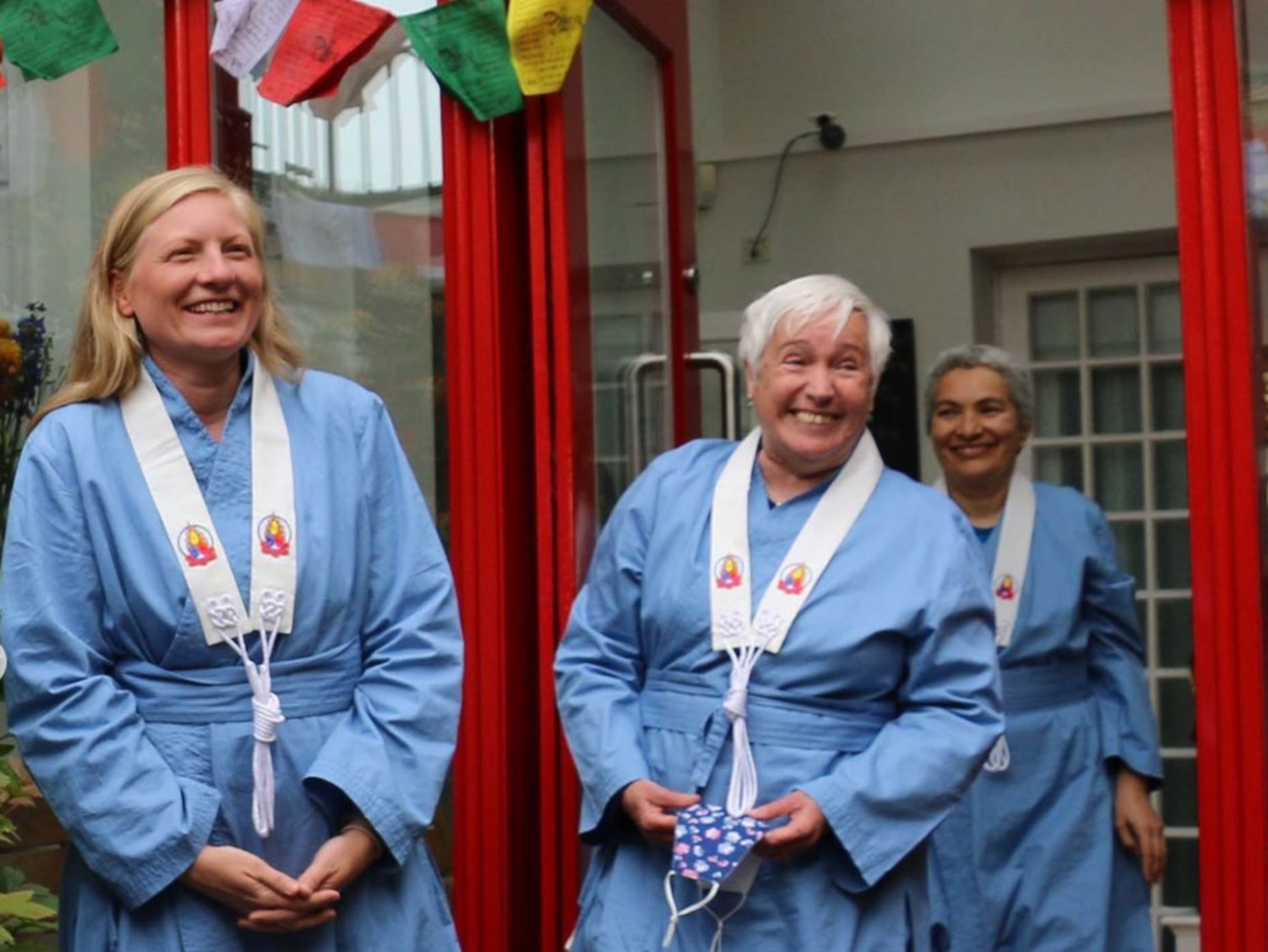
Read More
Jenny Tarrant from Deal becomes Vidyanadi (a long first “a” and a long final “i”), a name meaning “She who is a river of wisdom.” Registered spelling: Vidyanadi. Private Preceptor: Dayapaksini.
Rowena Wingfield-Davies from Croydon becomes Simhasraddha (dot under the “m”, accent above the second “s” and a long final “a”), a name meaning “She who has lion-like faith.” Registered spelling: Singhashraddha. Private Preceptor: Dayapaksini.
Hannah Peaty from the LBC becomes Amalanandi (long final “i”), a name meaning “She whose joy is in purity.” Registered spelling: Amalanandi. Private Preceptor: Jyotismati.
Public preceptor for all: Subhadramati.
SADHU! SADHU! SADHU!
Yours in the Dharma,
Subhadramati
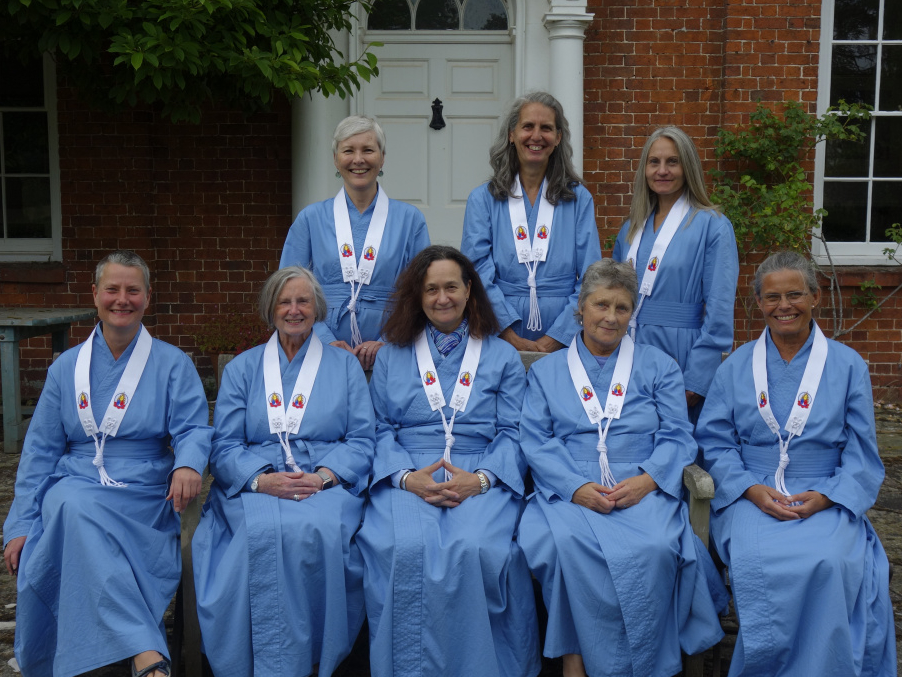
Read More
Public Preceptor Santavajri:
Leah Cooper becomes Kiranadhi, (dot under the ’n’ and long second ‘i’), a Sanskrit name meaning She whose Wisdom shines like a Moonbeam. Private preceptor Vajrasara
Registered spelling Kiranadhi
Jess Pailthorpe becomes Dayadarsini (long second ‘a’, accent on the ’s’ and long second ‘i’), a Sanskrit name meaning She who has Vision and Compassion.
Private preceptor Varasahaya.
Registered spelling Dayadarshini.
Debbie Jones becomes Taramaitri (long first and second ‘a’ and long second ‘i’) a Sanskrit name meaning She who has the Love of Tara.
Private preceptor Kalyacitta
Registered spelling Taramaitri.
Public Preceptor Parami:
Lesley Davison becomes Satyacitta (long third ‘a’), a Sanskrit name meaning She who places her Heart on the Truth.
Private preceptor Santavajri
Registered spelling Satyacitta
Maria Engström becomes Subhalocani (accent on the ’s’, long ‘i’) a Sanskrit name meaning She who sees what is Truly Beautiful.
Private preceptor Santavajri
Registered spelling Subhalocani
Mo Cullen becomes Muditasuri (long ‘a’. long second ‘u’ and long second ‘i’. Accent on the ’s’), a Sanskrit name meaning Heroine of Sympathetic Joy.
Private preceptor Gunasiddhi
Registered spelling Muditashuri
Paula Youell becomes Paranita (long first and last ‘a’, long ‘i’), a Sanskrit name meaning She who is Guided by the Further Shore.
Private preceptor Suryamati
Registered spelling Paranita
Lena Milosevic becomes Akasarani (long first, second and fourth ‘a’. accent over the ’s’, dot under the ’n’ and long ‘i’), a Sanskrit name meaning Queen of Space.
Private preceptor Samacitta
Registered spelling Akasarani
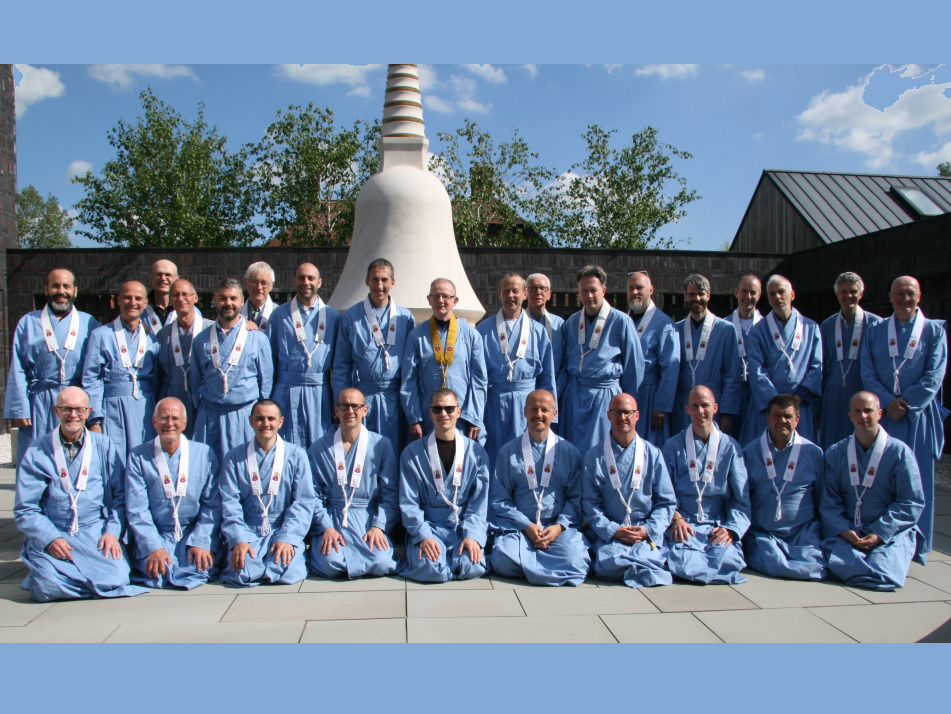
Read More
Public preceptor: Arthapriya
Peter Bennion becomes Mahaprasara (long second a), meaning “He who makes great progress”. Private preceptor: Jayagupta
Martin Payne becomes Akashasiddhi (long first and second a), meaning “One whose accomplishment is the unbounded nature of the awakened mind”. Private preceptor: Prasannavira
Pete Else becomes Kshantichara (long first and second a), meaning “He who practices patience”. Private preceptor: Jayagupta
Stephen Powell becomes Manjunara, meaning “Gentle, beautiful, charming man”. Private preceptor: Keturaja
Declan Brennan becomes Varabandhu, meaning “He who is an excellent friend”. Private preceptor: Paramabandhu
Ben Linsey-Bloom becomes Vilasamuni (long first a), meaning “The sage who shines forth”. Private preceptor: Bodhiketu
Public preceptor: Paramabandhu
Rich Gifford becomes Danaketu (long first a), meaning “He who is a beacon of generosity”. Private preceptor: Danapriya
Richard Dell becomes Prasiddhi, meaning “He who has great accomplishments”. Private preceptor: Amoghavamsa
Lawrence Xhamoni becomes Aryavasin (long first and third a). meaning “He who dwells with the noble ones”. Private preceptor: Maitreyabandhu
James Brodie becomes Khemabandhu, meaning “He who is a friend of the state of peace”. Private preceptor: Satyaraja
Kevin Mullaney becomes Prasannadeva, meaning “Divine being of clarity, purity and brightness”. Private preceptor: Yashodeva
Sanjay Poyzer becomes Suryanaga (long second a), meaning “Naga of the sun”. Private preceptor: Maitreyabandhu
Yours in the Dharma,
Arthapriya & Paramabandhu
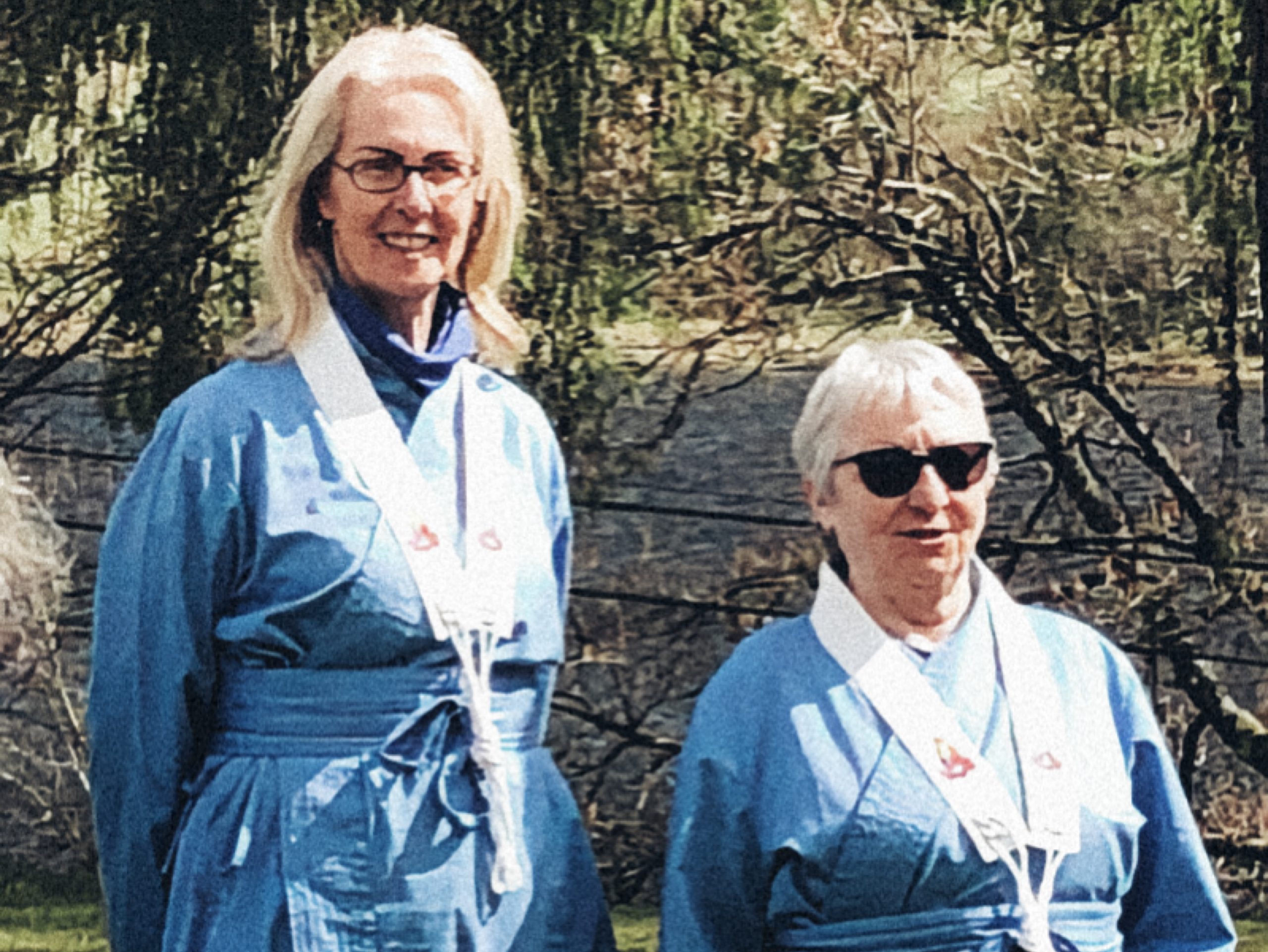
Read More
Hilary Barclay becomes Vajracetana (long final ‘a’), A Sanskrit name meaning ‘She whose purpose is diamond like’.
Westernised (registered) spelling: Vajrachetana
Christine Cather becomes Suvarnasri (dot under the ’n’, accent over the ’s’ and long ‘i’). A Sanskrit name meaning ‘Golden Light’.
Dassini was the private preceptor for both and I was the public.
This is the third of the sequence of three public ordinations for this one retreat: five women having been ordained in Adhisthana on Tuesday and three at the London Buddhist Centre yesterday. It is delightful to have 10 new Dharmacharinis join the Order and I particularly rejoice in the positivity and creativity brought to the situation once it became clear that neither Akashavana nor Taraloka were able to host the retreat. Not only the team and preceptors rose to the occasion but so did the women being ordained.
Sadhu to all involved,
Parami
NEW COLLEGE MEMBERS
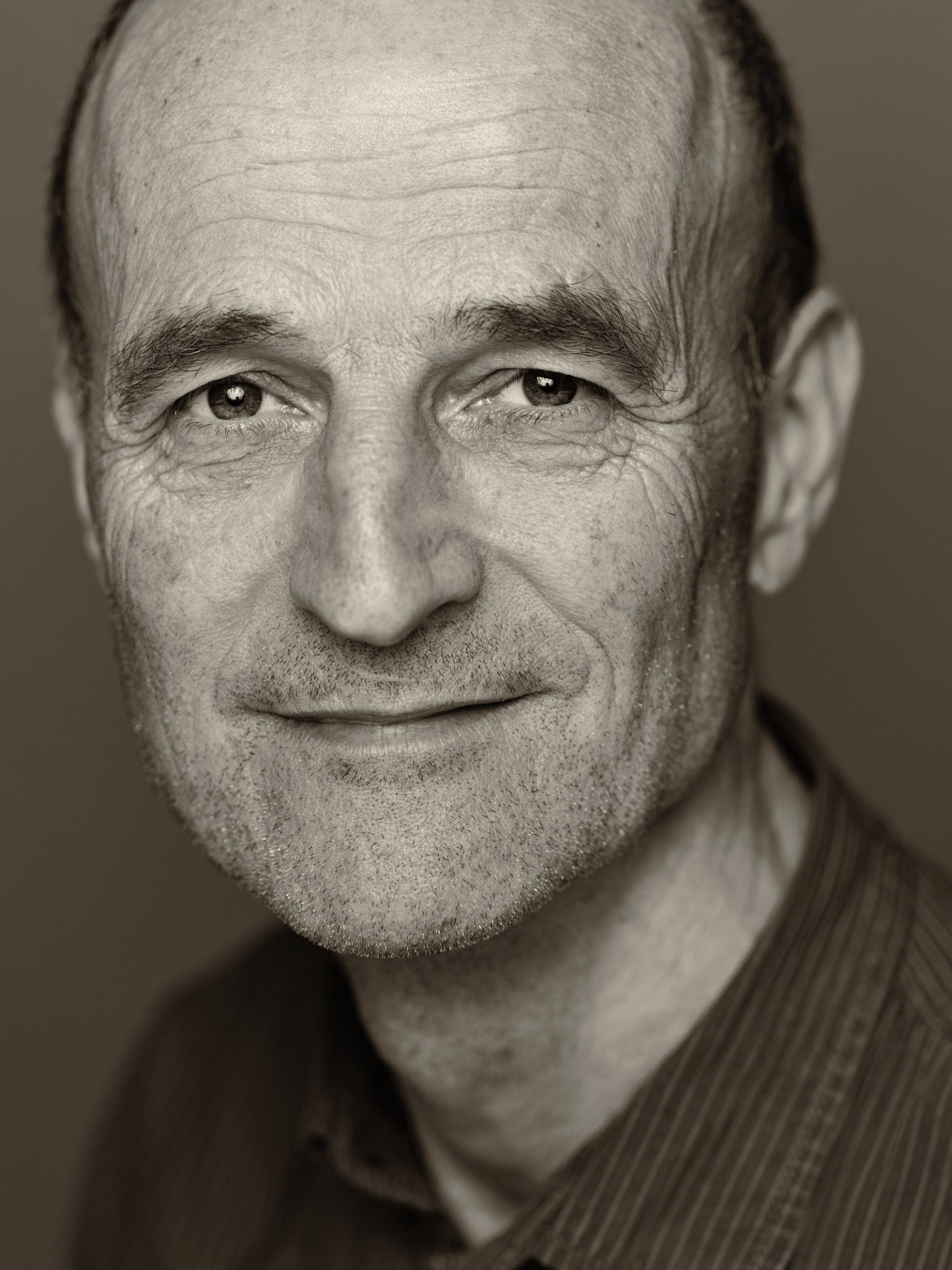
Yashodeva
Adhisthana, UK
Read More
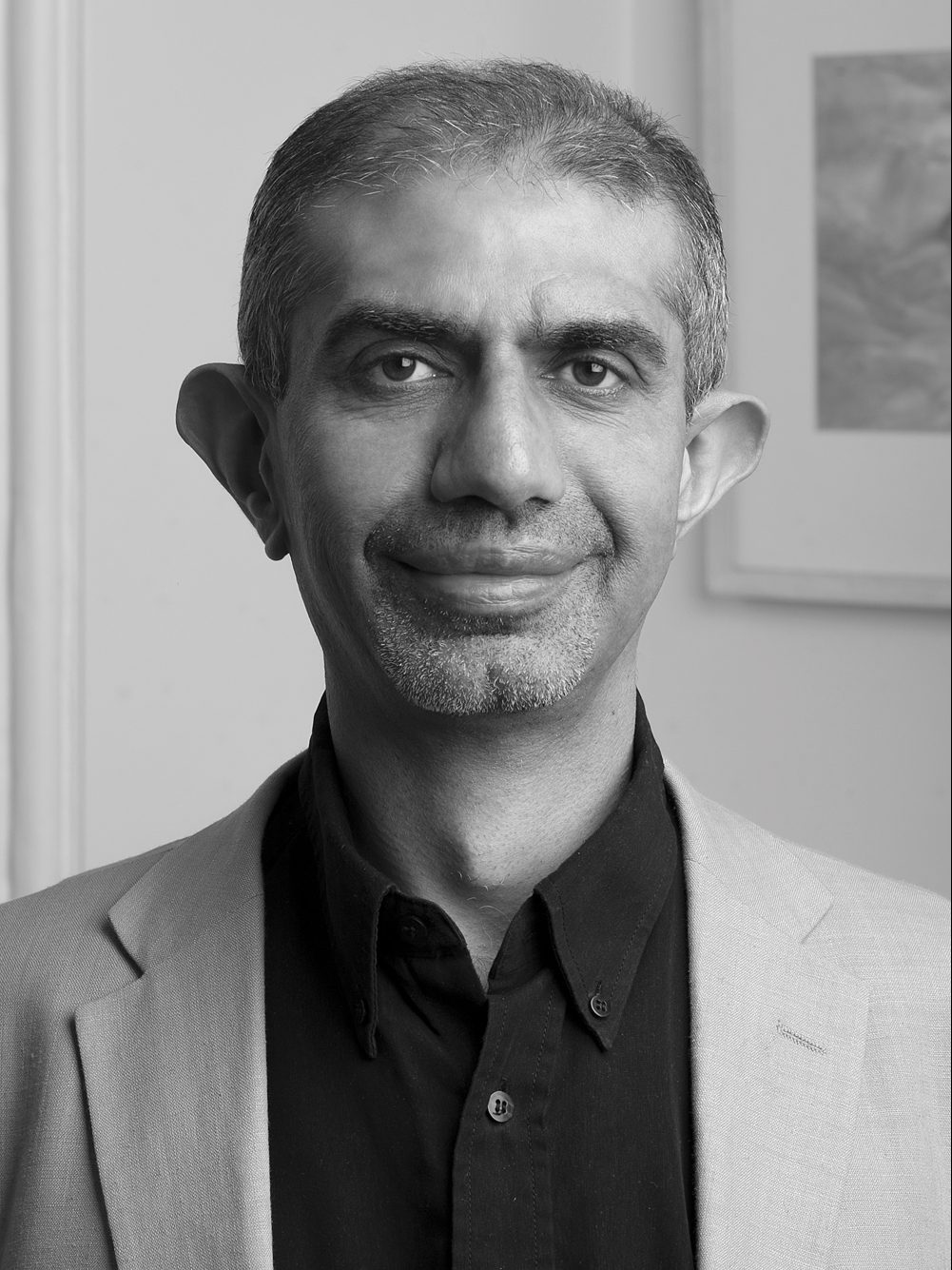
Jnanavaca
London, UK
Read More
I was born in Mombasa, Kenya in 1965 to Indian parents. I have no real memories of Africa as we moved to London when I was two. The sudden death of my father when I was eleven accelerated my questioning about the meaning of life, and in my early teens I decided I was a Buddhist. However I had almost no idea of what Buddhism was apart from what I had gleaned from a few popular books on Zen.
I studied physics at University – looking for answers to the big questions. I also tried to practise with a Zen group while I was a student – mostly trying to be mindful and have a routine in my life. I soon realised that physics wasn’t going to provide me with the answers I was looking for, and my attempts to practice Zen Buddhism left me disheartened and feeling that I lacked the determination and discipline that was needed. After graduating, I decided that my spiritual questioning was going nowhere and that I should get a ‘real’ job. So I ended up working for Marks and Spencer in their I.T. department. I can remember feeling lost and disillusioned and that I’d betrayed my ideals.
It wasn’t until 1994 when I was 28 that I came across the London Buddhist Centre and it was after my first retreat the Christmas of that year (led by Maitreyabandhu and Ratnadharini) that I realised that the Dharma was something I could really practise.
Soon after I moved into one of the LBC communities started by Maitreyabandhu and Paramabandhu (where I have lived ever since). I started working for the LBC in 1998 as a (not very good) fundraiser having finally found the courage to leave my job in the corporate world. I was ordained in 1999 by Subhuti at the Bordharan retreat centre near Nagpur, India. It felt completely right at a mythic level to be ordained in India and to have my public ordination fall on the anniversary of my father’s death twenty-two years previously.
Back at the LBC I took on being the Treasurer and a few years later, the men’s Mitra Convenor. For nine years from 2009 I was the Chair of the LBC which was both demanding and fulfilling – particularly the phase during the building of the new Vajrasana retreat centre. I handed on that role to Suryagupta in 2018 and shortly afterwards went on a 6 month solitary retreat – possibly the happiest period of my life. I am President of the Cambridge Centre and am currently co-writing a book with Maitreyabandhu on ‘Insight in our System of Practice’.
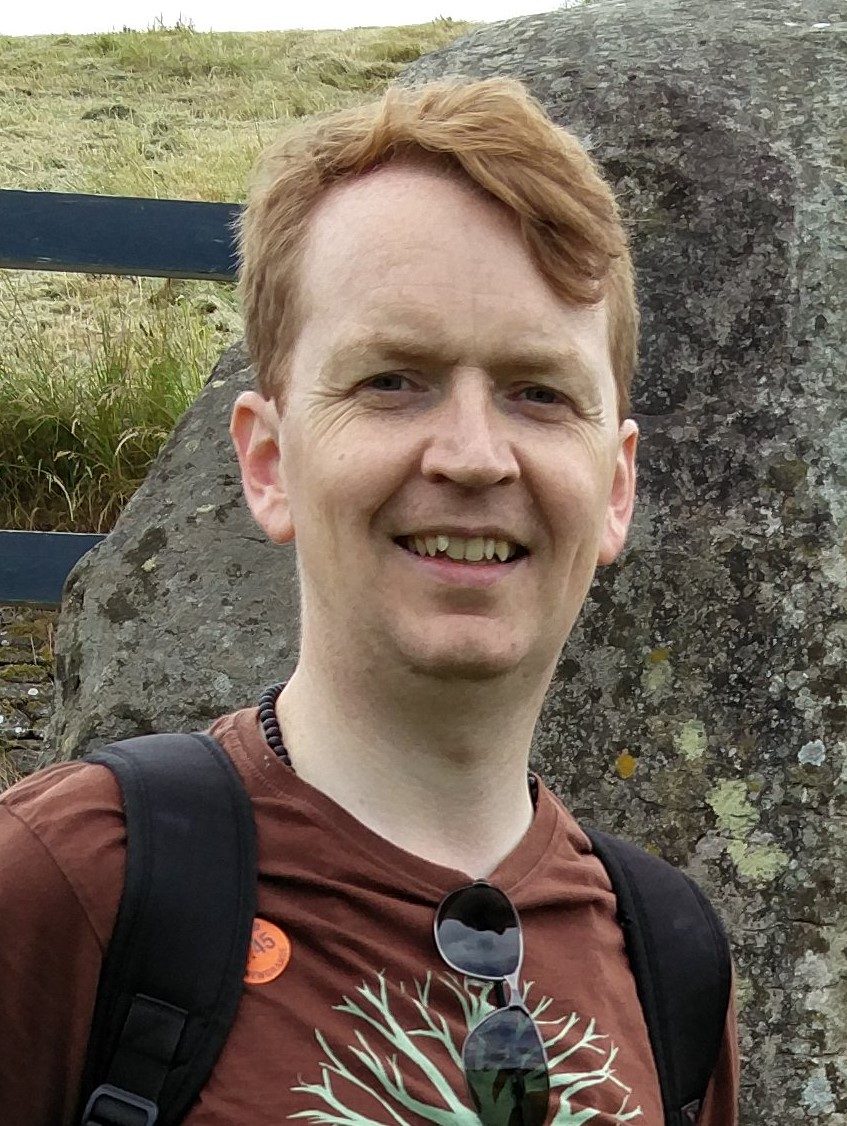
Vajrashura
Dublin, Ireland
Read More
I first came across Triratna (then the FWBO) in Dublin, Ireland, in 1999, at the age of 22. After being convinced by a friend, I learned meditation from Ratnabandhu of the Dublin Meditation Centre and really enjoyed it. A little while later I realised I was a Buddhist, and that without some deeper meaning in my life I would continue to live existentially adrift and feel unfulfilled. I was particularly struck by the clarity of Bhante’s expression of the Dharma. I was finishing my studies in Theoretical Physics in Trinity College Dublin, but decided to leave my Ph.D. unfinished and look for something more meaningful.
In 2002, I had a very significant time participating in a Karuṇā door-knocking appeal in London, and once back in Dublin I became a Mitra and asked for ordination, started working for the Dublin Buddhist Centre as Centre Manager, and moved into a new men’s residential community.
I very much enjoyed the ordination process and was ordained in 2007 in Guhyaloka, my Private Preceptor being Kulananda and my Public Preceptor being Saddhaloka.
In 2009, I became the Men’s Mitra Convenor for Dublin, a role I have loved doing and still do to this day. It’s a very pure experience of being able to help people to connect with and grow in the Dharma, and the friendships that are formed are meaningful indeed. In 2018, I became a Private Preceptor, and I continue to work closely with the ordination team in Padmaloka to help men in Ireland prepare for ordination.
I recently started working for the Sikkha Project on a part-time basis. I still live in a men’s community and enjoy that very much. I am happy to be part of the College so that I can support the continued development and growth of the Triratna Sangha, particularly in Ireland.
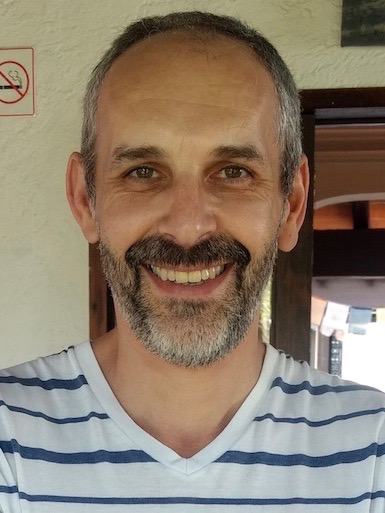
Nagapriya
Cuernavaca, Mexico
Read More
After a period of academic study and work, I moved to Mexico in 2013 and, somewhat inadvertently, co-founded Centro Budista de Cuernavaca of which I am current and founding Chair. I also ended up as the director of Editorial Dharmamegha, a project dedicated to publishing Sangharakshita´s and other Triratna works in Spanish. I got involved in the men´s ordination process in Latin America shortly after arriving in Mexico and form part of the ordination team.
There is huge potential for Triratna in Latin America and I feel privileged to be able to contribute to this process in some small way. Mexico particularly seems a receptive field for the Dharma and our sangha here is growing rapidly.
My published works include: Exploring Karma and Rebirth (Windhorse, 2003), Visions of Mahayana Buddhism (Windhorse, 2009), and The Buddhist Way (New Holland, 2018).
OBITUARIES
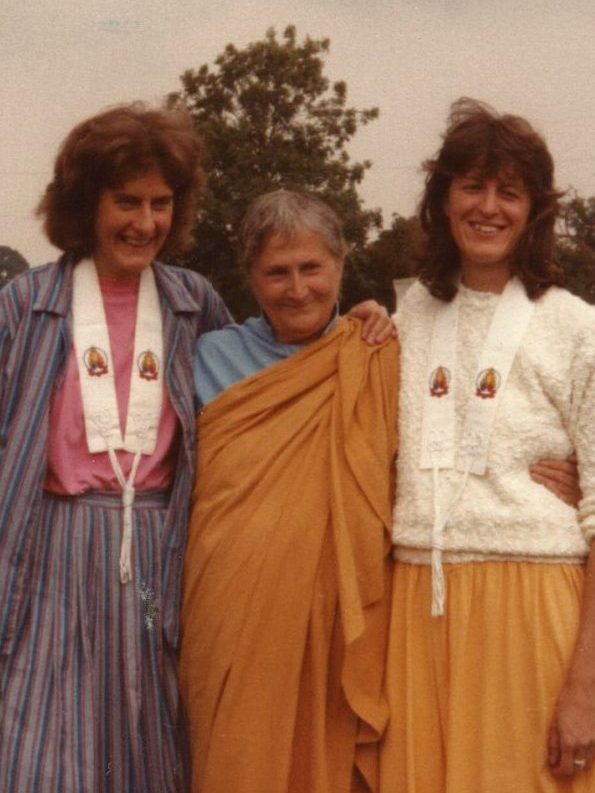
Dharmacharini Anagarika Ratnasuri
1 April 1923 – 13 September 2019
Read More
All who experienced the war witnessed the fragility of life, but perhaps especially those who saw conflict directly. Ratnasuri worked in the anti-aircraft battery guiding the guns and the men firing them. One night in Antwerp, after a frightening overhead air-raid, she set off to meet a boyfriend and found out he had been killed in a direct hit.
Ratnasuri was already looking for some deeper meaning to her life, but like many women she ended up getting married and settling down. Her marriage wasn’t a happy one, but she did have two sons, Kevin and Peter, who she loved and cherished. She found employment doing quality control in a chocolate factory and as a lab technician for the Milk Marketing Board. The years passed and the children grew up.
In her mid-fifties, having left home, Ratnasuri took up yoga with Sona. Through him she started to read books about Buddhism. She also came across the magazine Mitrata, which was produced in Norwich by Srimala. Ratnasuri started attending classes at the Norwich Buddhist Centre. Typically, she threw herself into the sangha with youthful verve, even though, being in her fifties, she was regarded as ‘old’ by younger members. Eventually she was going to every class the centre offered! She worked with Aloka and other Order Members in the wholefood café, Rainbow, latterly Oranges. She had been involved for two years when she became a mitra. It was five years after first coming along to the Norwich Centre when, in 1983, she was ordained, alongside Ratnavandana and Ratnadakini. She was given the name Ratnasuri, which means ‘Heroine of the Three Jewels’. At sixty, most people are thinking about retirement. Ratnasuri was just getting started!
After ordination, she lived and worked around the Croydon Buddhist Centre for a year. Then, in 1983, the women members of the Western Buddhist Order decided to hold a month-long intensive retreat on the Isle of Muck. There were just twenty women Order members at the time and they joked on the journey that if the ferry went down on the way to Muck, that would be it for the women’s wing of the Order! Fortunately, it didn’t. On the retreat Sanghadevi announced that she wanted to set up the FWBO’s first women’s retreat centre and wanted someone to go with her. Guess who put up their hand and volunteered?
So at sixty-two years old, Ratnasuri found herself going down the long, bumpy track to Cornhill Farm, Shropshire, now known as Taraloka. There were four women who were the founder members of the Taraloka community: Sanghadevi and Ratnasuri and the mitras who would become Karunasri and Kulanandi. The fifth member was Ratnasuri’s cat, Tansy. It wasn’t easy; they were pioneers, and pioneers in boiler suits and hard hats as well, having to undertake much of the restoration work on the old farm themselves. Ratnasuri cooked valiantly for everyone on a camping gas stove, frequently with bits of ceiling falling in the food! She also co-led many of the meditation retreats with Sanghadevi.
Not long after moving to Taraloka, Ratnasuri became an ‘anagarika’. This meant following the example of the Buddha by committing oneself to a simple life where one does not pick and choose; and also taking vows of celibacy. At her ceremony she wore the orange robes that symbolically connect with the Buddha and his early followers, a tradition stretching back over 2,500 years.
But Ratnasuri’s heroism didn’t stop there. In 1987, while on retreat at Taraloka, Ratnasuri received a phone call from Srimala. She told her that Sangharakshita’s mother was ill so he couldn’t go to India to conduct ordinations as planned. Now he wanted to ask if Ratnasuri would go with her, Srimala, to India to conduct the first ordinations of Indian women along with Padmasuri, who was living there. Ratnasuri was startled, but she couldn’t mention it to anyone. A retreatant commented to her, “Something happened to you on that retreat!” and she thought, “If only you knew!” Having never been to India before she was scared by the prospect and wondered how she would cope with speaking in front of so many people. But she told herself, “I get nervous speaking in front of five people, what difference does it make if there’s five hundred?” So, aged sixty-four, she went to India to conduct the public ordinations of Jnanasuri and Vimalasuri. As an anagarika, she wore her orange robes for the ceremony, which would have been a powerful visual symbol about women’s spiritual potential for the Indian community.
The ordinations of the women in India were conducted ‘on behalf of’ Sangharakshita. Two years later he asked three senior women Order members to perform ordinations acting now ‘on their own responsibility’ – a very significant development for the Order. Srimala, Sanghadevi and Ratnasuri were the first women private preceptors acting in this way. But it was Ratnasuri who was asked to perform the public ordinations. In summer 1989, on a retreat at Taraloka, she received into the Order Cittaprabha from Sydney. A few weeks later, on 11 September, another six women received their ordinations. These were historic events, not only for the Western Buddhist Order, but for the whole Buddhist world where full ordination of women – a lineage started by the Buddha himself – had long since largely died out. Because Sangharakshita was able to entrust her with this responsibility, and she was willing to take it on, Ratnasuri opened the door for a new ordination lineage of women ordaining women to come into being. She went on to ordain many more women into the Triratna Buddhist Order. As a preceptor she privately and publicly ordained 45 women in total, as well as being a kalyana mitra or friend to countless others.
Ratnasuri was a lover of meditation and as well as living in the community at Taraloka, she took part in many retreats held there. She was frequently the oldest in community situations, but her joie-de-vivre and youthful spirits belied that. During all this time, she maintained her love and inspiration for the arts. She was a poet and a photographer. She loved relaxing to classical music in her reclining chair. And she was a print-maker, making prints from her own woodcuts.As well as her passion for creativity, meditation and friendship, she was a lover of technology and could be seen at the Genius Bar of an Apple Store whenever she got a chance!
At the end of 2005, Ratnasuri had a huge shock. She was celebrating a birthday in the Taraloka community when she had a phone call to say that her son, Peter, had died. His death was a great loss to Ratnasuri. Previously, she had been suffering with anaemia and later confided that had she still been anaemic, the shock might have killed her. Characteristically she responded to old age and anaemia by taking up the Vajrayogini meditation practice because “I needed more blood” and to “let go more”. She could be seen frequently at Order events manifesting the dakini energy on her pedal scooter!
In 2014, she made the decision to leave Taraloka, her home of nearly thirty years, and move into sheltered accommodation in nearby Wrexham. A retreat centre is a busy place to live and, aged ninety-one, she was ready for a quieter, more reflective life. She also relished the idea of shopping and cooking for herself, going about town, having adventures. Unfortunately, her eyesight was deteriorating quite rapidly due to macular degeneration, so she couldn’t be as independent as she would have liked. One of the hardest things about sight loss, she said, was not being able to see the faces of her friends.
In 2019, it became clear that independent living was no longer viable for Ratnasuri, even though her friends, carers and the Taraloka community had helped considerably. With their help, she moved into a residential home in Wrexham with her beloved budgies, who gave her so much joy.
‘Ratna’ means jewel and Ratnasuri was a kind, generous, creative and multi-faceted person. ‘Suri,’ means heroine: she broke down barriers of what it means to be a woman Buddhist in the west and what it means to practise the Dharma in mid to old age.
She leaves behind an Order with a flourishing women’s wing, and a lineage of women’s ordinations that she helped inaugurate. She leaves behind many devoted friends and admirers, and her son Kevin. She will be sadly missed.
Dharmacharini Kamalagita, 17/09/19
MEETING SUMMARIES + MINUTES
2020
View the minutes of the 2020 international Preceptors’ College meeting here.
